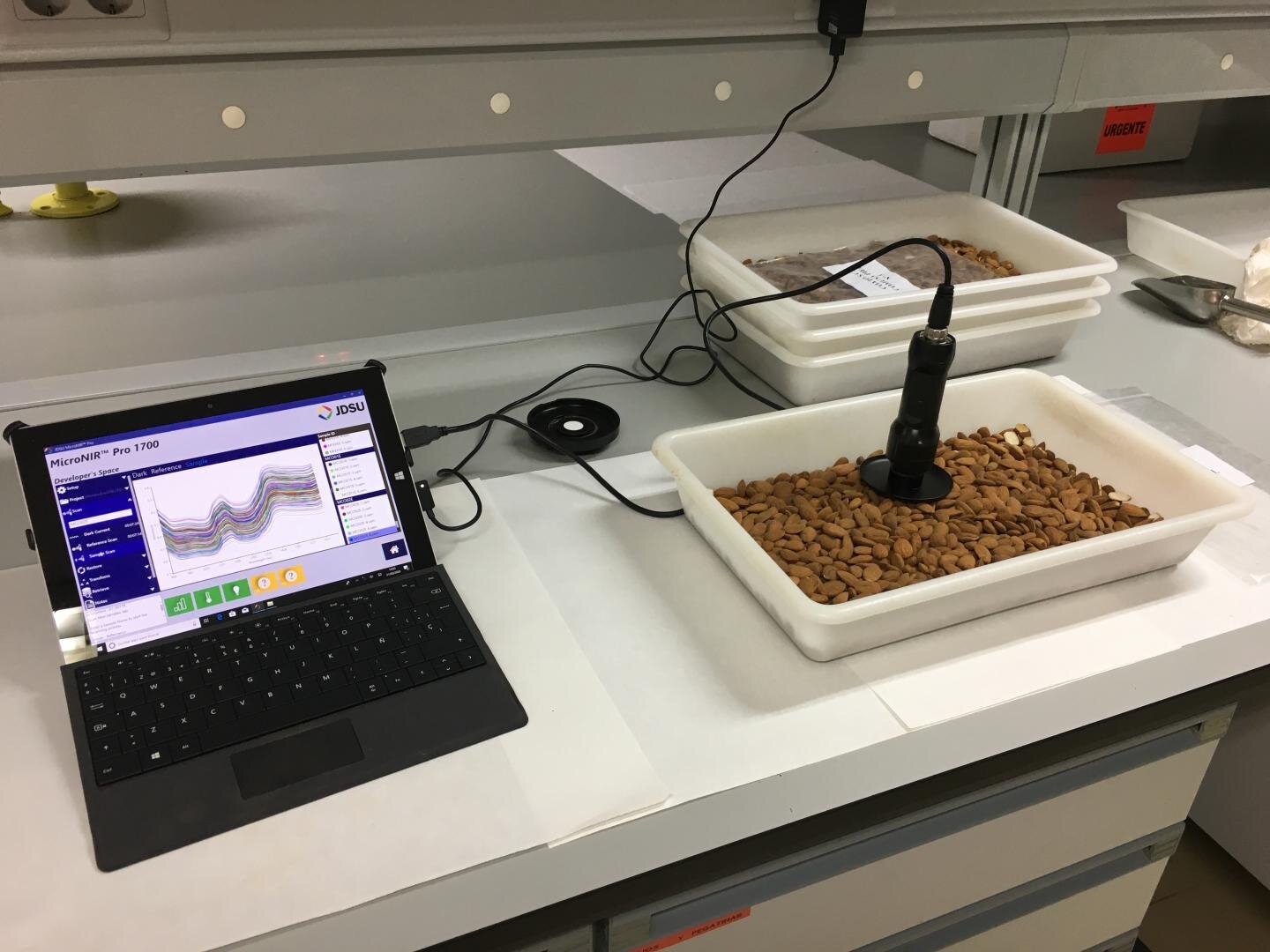#New technology to detect bitter almonds in real time

“#New technology to detect bitter almonds in real time”

Who hasn’t at some point been chewing on an almond and tasted an unpleasant and unexpected aftertaste that has nothing to do with the taste we are used to from one of the most consumed nuts in the world? The culprit has a name: amygdalin, a diglucoside that, when in contact with enzymes present in saliva, breaks down into glucose, benzaldehyde (the cause of the bitter taste) and hydrogen cyanide.
To reduce this unpleasant ‘surprise,” the Farming Systems Engineering (AGR-128) and Food Technology (AGR-193) research groups at the University of Cordoba’s School of Agricultural and Forestry Engineering, with collaboration from the Andalusian Institute of Agricultural Research and Training’s Alameda del Obispo Center, developed method that can predict levels of the abovementioned amygdalin present in the nuts analyzed both with and without shells, as well as correctly classify sweet almonds and bitter ones on an industrial scale, something that has only been done with shelled nuts, individual kernels or ground nuts to date.
The new system uses portable equipment based on near infrared spectroscopy (NIRS) technology, which can analyze large amounts of a product in situ in real time, without having to go into a lab. This technological application is “of great interest to the farming sector,” explains Professor Dolores Pérez Marín, since almond bitterness in the wild can be helpful to prevent predators from ingesting the seeds of certain varieties, but on an industrial scale it offers no advantages and many disadvantages: an unpleasant taste, product devaluation and potential problems with food safety if consumption of bitter nuts occurs on a large scale.
Technically, the NIRS sensors use a beam of light that, when interacting with organic matter, returns a unique signal (spectrum) for each product sample, as in an unmistakable digital print that provides information and allows us to define the sample. In this case, as explained by doctoral student and first author of the research paper, Miguel Vega Castellote, the portable sensors, “whose signal along with the reference values allow for the development of prediction models,” are able to analyze different parameters by “scanning” the product quickly and noninvasively, as in without modifying it.
Food fraud
Using NIRS technology, in which the research team has vast experience with an array of food products, is especially useful in the early detection of possible fraud and in food authentication. Therefore, the team has initiated another research project aimed at detecting batches of sweet almonds adulterated with bitter ones and in which almost 90% of the fraudulent items were identified. The system tested in this research, explains Professor María Teresa Sánchez Pineda de las Infantas, another author of the paper “could be implemented at any point in the value chain, including upon reception, during processing and shipping, and could be used as a fast and affordable anti-fraud early warning method.”
Fast, accurate and non-destructive: The new method to analyze food quality
Miguel Vega-Castellote et al, Exploring the potential of NIRS technology for the in situ prediction of amygdalin content and classification by bitterness of in-shell and shelled intact almonds, Journal of Food Engineering (2020). DOI: 10.1016/j.jfoodeng.2020.110406
Citation:
New technology to detect bitter almonds in real time (2021, January 29)
retrieved 30 January 2021
from https://phys.org/news/2021-01-technology-bitter-almonds-real.html
This document is subject to copyright. Apart from any fair dealing for the purpose of private study or research, no
part may be reproduced without the written permission. The content is provided for information purposes only.
If you liked the article, do not forget to share it with your friends. Follow us on Google News too, click on the star and choose us from your favorites.
For forums sites go to Forum.BuradaBiliyorum.Com
If you want to read more Like this articles, you can visit our Science category.




